Archivio
-
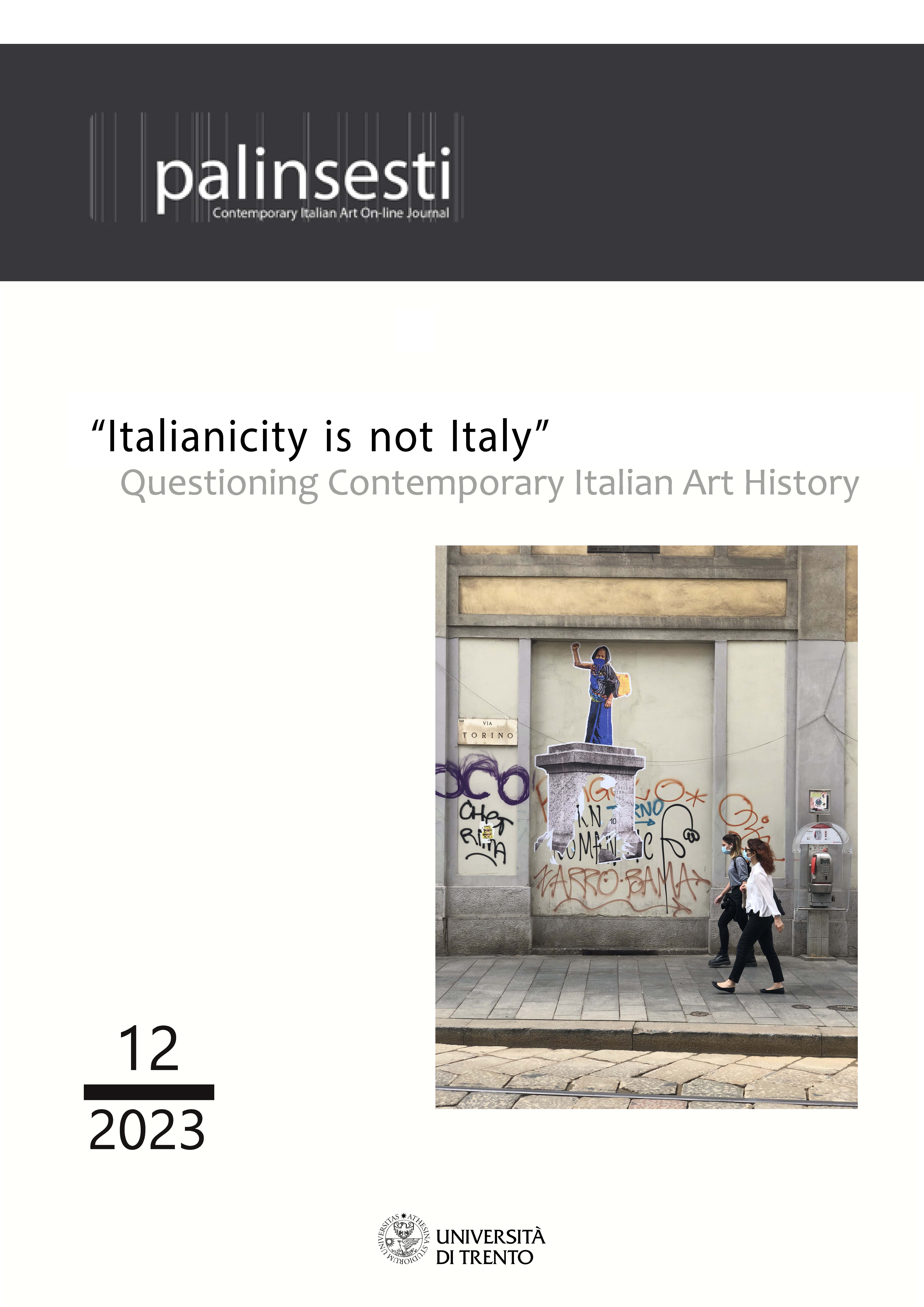
«Italianicity is not Italy». Questioning Contemporary Italian Art History
N. 12 (2023)A cura di Tenley Bick
Prendendo spunto dal famoso concetto di «italianità» descritto da Roland Barthes e dal funzionamento artificiale, persino ‘barbaro’, del significato connotativo, questo numero include contributi che mettono in questione alcune narrazioni dominanti sull’arte italiana del dopoguerra e contemporanea, in particolare attraverso l’attenzione alla teoria postcoloniale, alla decolonizzazione dello sguardo e ai discorsi segregativi che la inquadrano come ambito di studio.
ISBN: 978-88-5541-120-2
-
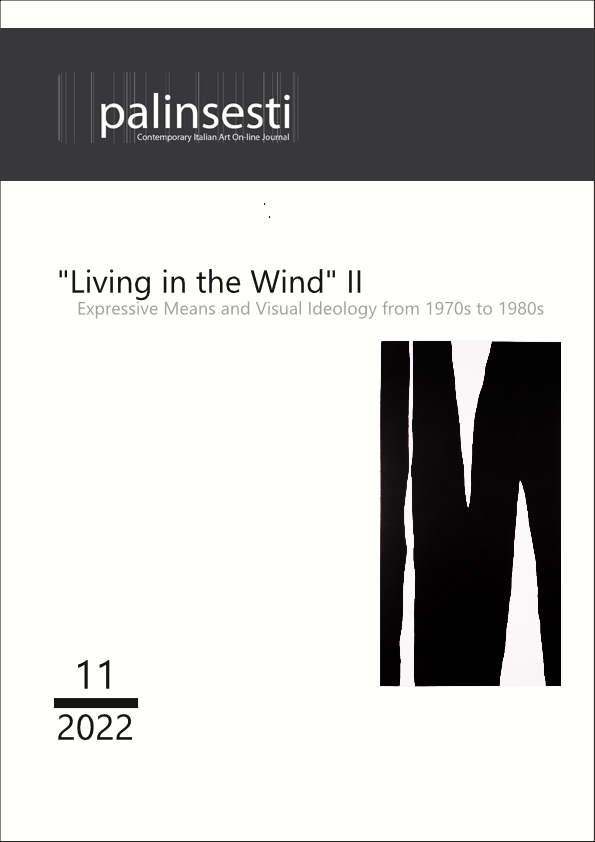
«Abitare il vento». Forme espressive e ideologie visive dagli anni settanta agli anni ottanta, II
N. 11 (2022)A cura di Alessandro Del Puppo e Andrea Capriolo
Questo secondo numero di «Abitare il vento» approfondirà i fenomeni marginali e trascurati degli anni ottanta attraverso la riscoperta di artisti, movimenti e polemiche solitamente trascurati dalla storiografia relativa a questo periodo.
-
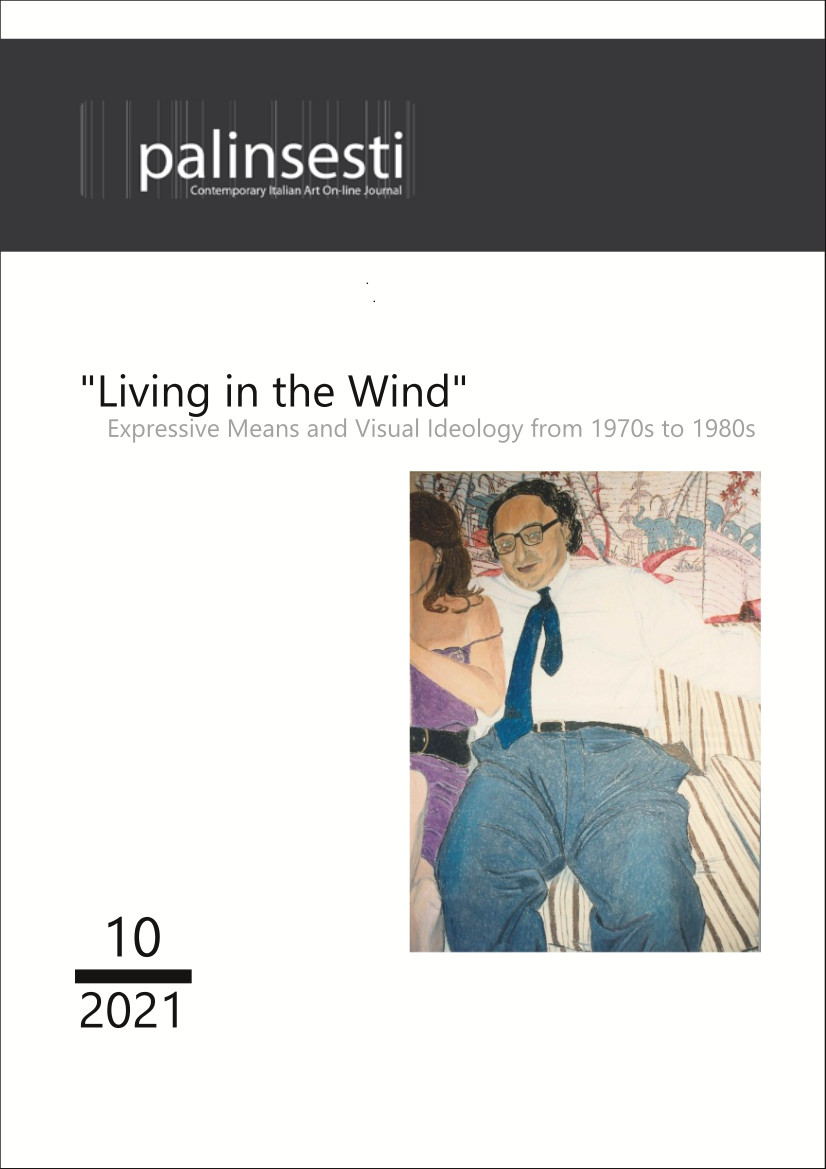
«Abitare il vento». Forme espressive e ideologie visive dagli anni settanta agli anni ottanta, I
N. 10 (2021)A cura di Alessandro Del Puppo e Andrea Capriolo
Questo numero di Palinsesti si propone di ridefinire l’arte italiana degli ultimi anni settanta e degli anni ottanta attraverso una lente multidisciplinare che incrocia ambiti come la storia sociale, lo studio delle pratiche artistiche e visive, lo studio della letteratura, e la musica, nonché i nuovi paradigmi filosofici di quel periodo.
-
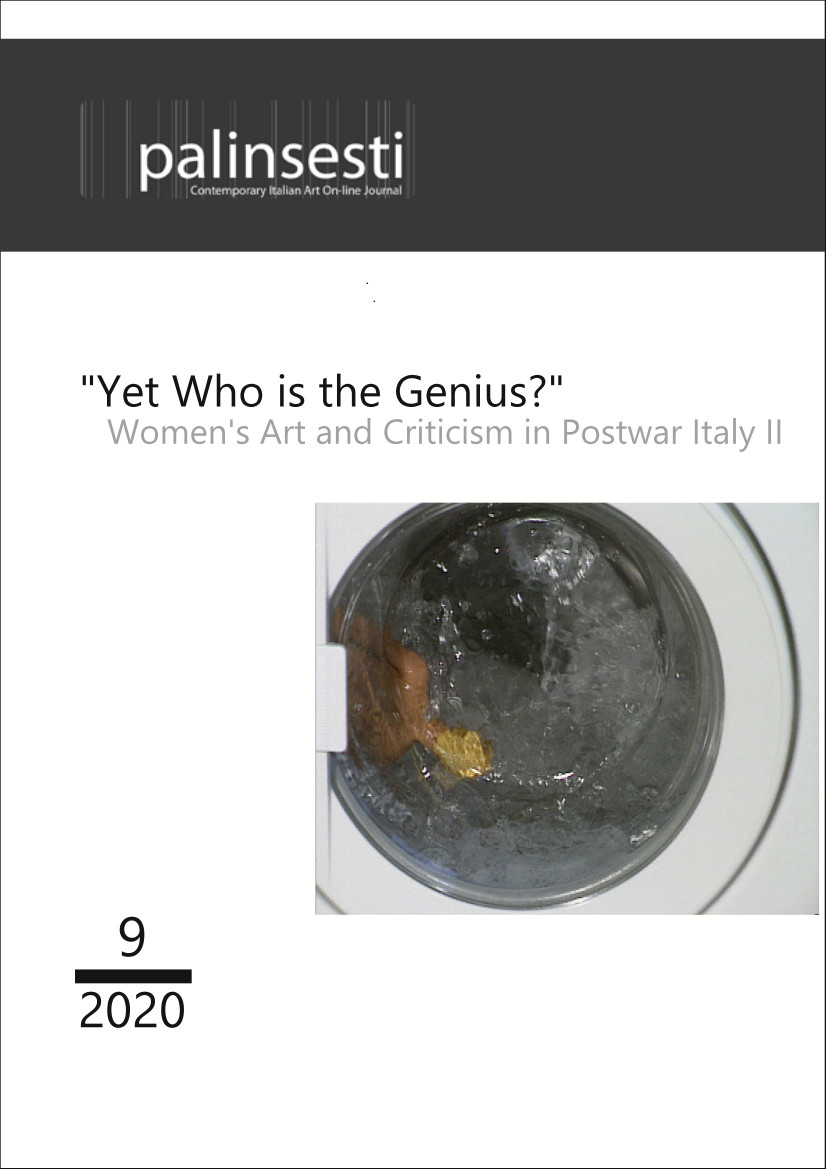
«Ma il genio chi è?». L’arte e la critica delle donne nell’Italia del dopoguerra, II
N. 9 (2020)A cura di Silvia Bottinelli e Giorgia Gastaldon
Palinsesti’s double issue “Yet Who is the Genius?” includes articles that address women’s art and criticism in postwar Italy. Looking at work created by artists from the 1960s to the present, this issue casts light on generational differences while acknowledging persisting inequalities in the art world.
-

«Ma il genio chi è?». L’arte e la critica delle donne nell’Italia del dopoguerra, I
N. 8 (2019)A cura di Silvia Bottinelli e Giorgia Gastaldon
2020 marks the fiftieth anniversary of the Manifesto di Rivolta Femminile (Manifesto of Feminine Revolt), written by Carla Lonzi, Elvira Banotti and Carla Accardi in July 1970. It is based on this premise that Palinsesti decided to dedicate a double issue to women’s art and criticism in postwar Italy. The title «Ma il genio chi è?» (“Yet Who is the Genius?”) is borrowed from a homonymous 1970s article by artist Cloti Ricciardi, showing parallelisms with the writings of American art historian Linda Nochlin.
-
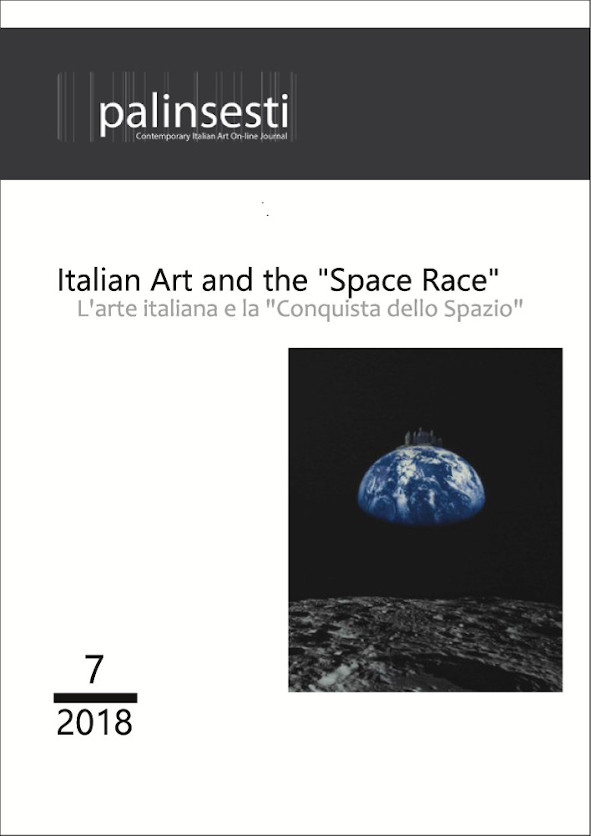
L’arte italiana e la “Conquista dello Spazio”
N. 7 (2018)A cura di Laura Iamurri e Denis Viva
This issue is dedicated to the sci-fi imagery in Visual Arts during the period of the so-called “Space Race”. Since the first launch of the Sputnik 1 (1957) until the first “Onward to the Moon” by Neil Armstrong and Buzz Aldrin (1969), Visual Arts seemed to be inspired by that decade of hectic technological competition between US and USSR. If many Western artists were fascinated by this space adventure, in Italy this topic was early evoked by the manifest of Spatialism and by the works of Arte Nucleare, reaching the peak with the playful and immersive Fabio Mauri's lunar environment for the show Il teatro delle mostre, in 1968.
-
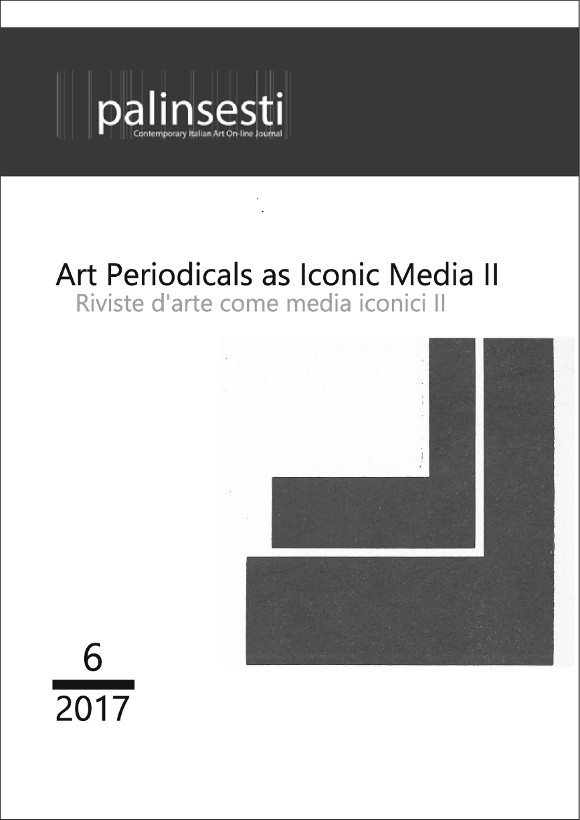
Riviste d’arte come media iconici, II
N. 6 (2017)Numero speciale sul progetto Capti (www.capti.it) a cura di Giorgio Bacci, Davide Lacagnina, Veronica Pesce e Denis Viva
This issue, entitled Art Periodicals as Iconic Media, is the second one dedicated to the role of art periodicals in Italian Art since 1960. The issue concentrates on art periodicals as vehicles for images, rather than periodicals as platforms for the debates of art critics.
-

Riviste d’arte come media iconici, I
N. 5 (2016)Numero speciale sul progetto Capti (www.capti.it) a cura di Giorgio Bacci, Davide Lacagnina, Veronica Pesce e Denis Viva
This issue, entitled Art Periodicals as Iconic Media, is the dedicated to the role of art periodicals in Italian Art since 1960. The issue concentrates on art periodicals as vehicles for images, rather than periodicals as platforms for the debates of art critics.
-
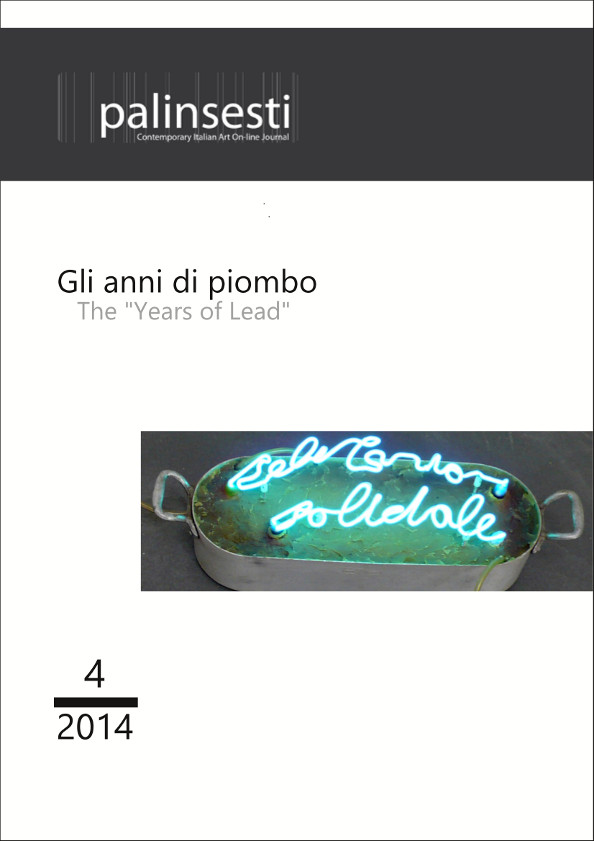
Gli anni di piombo
N. 4 (2014)CFP a cura di Colin Lang e Elizabeth Mangini
Fascicolo a cura di Elizabeth ManginiThe issue explores the complex 1970s decade. Bracketed on one side by the revolutionary impulses and pluralist art practices of the late 1960s, and on the other by a conservative return to order and the retrenchment of authoritative painting in the 1980s, the 1970s is an era without a clear identity. In art, this same period witnessed the dissolution of collective artistic attitudes like Arte Povera and Fluxus into the disparate orbits of individual careers.
-
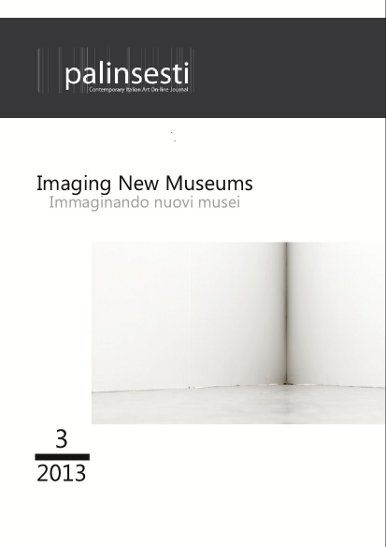
Immaginando nuovi musei
N. 3 (2013)The developing of New Museology and the growing emergence of thematic displays have also been seen in contemporary art museums in Italy, not without polemics and controversy. This is issue is dedicated to the redefinition of Italian art between the 1960s and today in reaction to the changing conditions of museum exhibitions.
-
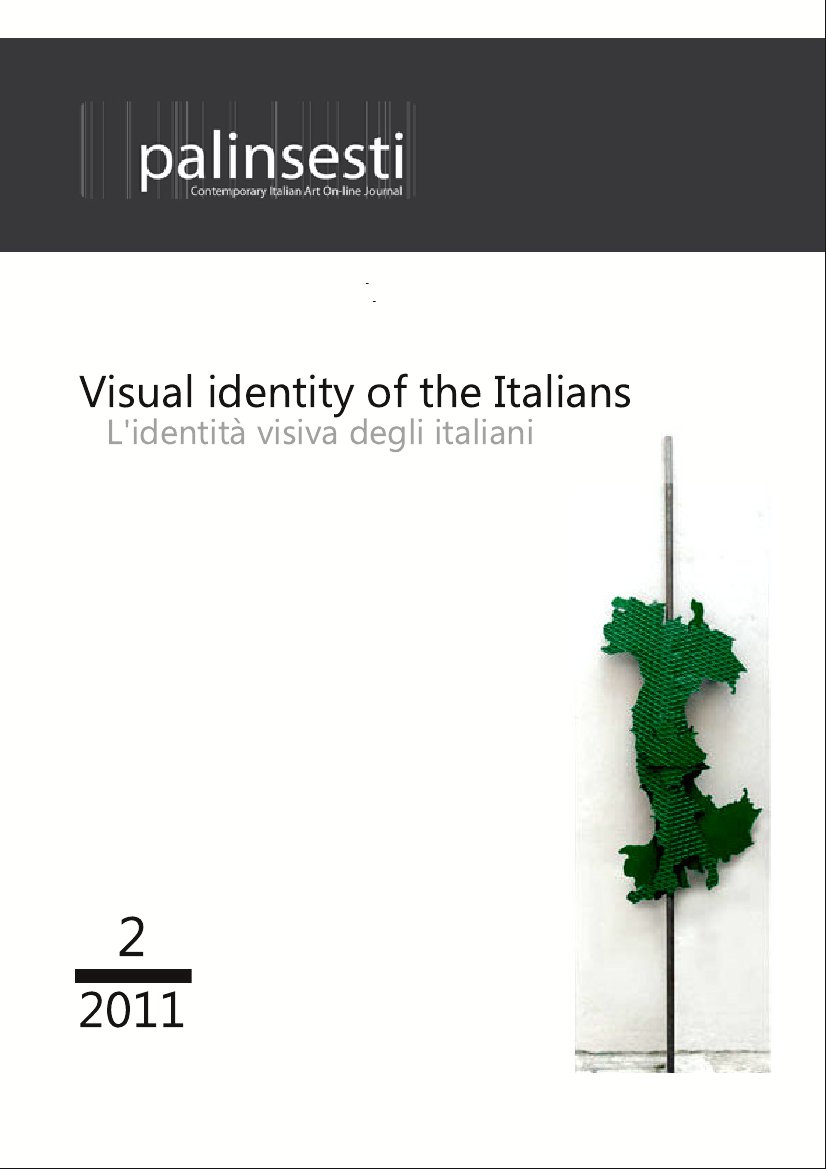
L’identità visiva degli italiani
N. 2 (2011)Have the artworks of the last forty years preserved their ability or capacity to narrate the historical, anthropological, and social identity of Italy? In which paradigmatic works is this capacity still surviving and in which is it brought into crisis? This issue is focused on artworks that addressed the visual identity of Italy in many respects: archetyes, stereotypes, tradition, iconographic crisis, the sight by the other, etc.
-

Una nuova metodologia per gli anni sessanta?
N. 1 (2011)Did the art of the Sitxies effectively introduce innovations to such a point that suggests the need to revise and adapt historical methodology according to these new objects of study (the artworks)? Is still possible to study and analize these artworks as a corpus comparable to the past artworks? This issue try to encourage a debate on art historical methodology.

